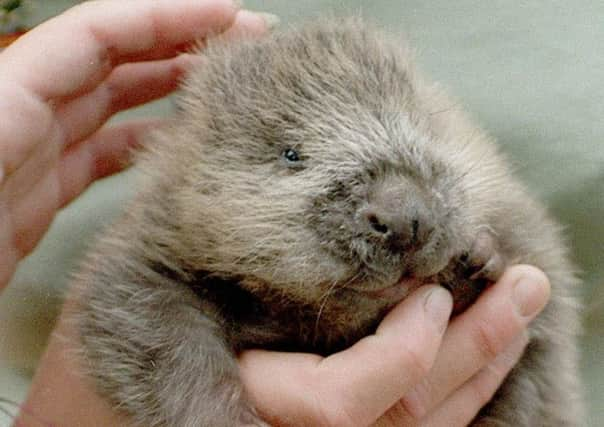Caution key to future rewilding schemes


The romantic notion of rewilding appears to have captured the public imagination in recent months. There are many apparent advantages, particularly with regards to employment and economic opportunities. However, one popular facet, that of reintroducing a once lost species, can create understandable concern among land managers and rural communities who bear the brunt of any cost through damaged crops, for example.
The word “rewilding” was coined in the 1990s when biologist Michael Soulè used it to describe the reintroduction of influential “keystone” species, which in combination with protecting habitats across large interconnected areas could have a chain reaction of benefits throughout an ecosystem. Of course, it now has a broader meaning, incorporating habitat and species restoration at different scales and placing an emphasis on reinstating “natural processes”.
Advertisement
Hide AdAdvertisement
Hide AdIn Scotland, one high-profile example has been the successful introduction in 2009 of four family groups of Eurasian beavers to Knapdale forest in Argyll. A longer running example is the sea eagle reintroduction, which recently reached a milestone of 100 breeding pairs. Landscape-scale native woodland restoration is also occurring. Community-led and collaborative approaches to landscape-scale habitat restoration are also increasingly emerging, such as the Coigach and Assynt Living Landscape and Carrifran Wildwood projects.
Scotland’s Rural College has been directly involved in building a stronger evidence base for rewilding, having conducted a study in 2014 on the socio-economic impact of a beaver population in the Tay which became established through escapes or illegal releases. The majority of land managers surveyed reported costs linked to beaver activities, including damage to trees, banks, drains or crops and the flooding of fields. Researchers estimated these annual costs for the area at close to £179,900.
Currently, no clear mechanisms have been developed to reimburse landowners for such losses and this compensation may need to be budgeted for in any future reintroduction programmes. While a forthcoming SRUC briefing on wild boar identifies potential benefits of the expansion of existing boar populations in Scotland, it also highlights considerable potential for stakeholder conflicts. Sea eagles can prey on lambs in some areas (albeit in low numbers) and upland woodland regeneration can require heavy deer culls, with potential economic impacts for sporting estates.
Developing and implementing a reintroduction is also costly, requiring trialling, consultation and monitoring. The beaver trial cost £2 million over seven years. A critical question is whether conservation spending and effort might in some cases be better focused on threatened existing native species – such as the wildcat.
However, rewilding does potentially offer large rewards in terms of attracting tourists. Studies have shown that nature-based tourism supports 39,000 jobs and contributes £1.4 billion to the economy annually. Sea eagle tourism on Mull generates £2m annually and estimates suggest a beaver release site could be worth £2m to the local economy. For landowners, opportunities also exist to receive payment for approaches to land management which reflect rewilding approaches such as rewetting fields. Future potential reintroductions (eg wild boar) may also provide scope for expansion of commercial hunting.
Rewilding, therefore, presents both potential opportunities and costs and presents policymakers with a distinct set of challenges and decisions. Outcomes are often unpredictable and given the levels of interest, a key future role for SRUC and other research providers relates to the development of a long-term evidence base, on the ecological, social and economic impacts of species reintroductions and landscape scale ecosystem restoration. Working with land managers and wider stakeholders is key, with reintroductions in particular necessitating a cautious, long term and consultation focused approach.
• Dr Rob McMorran is lecturer in environment and ecology at SRUC, Scotland’s Rural College www.sruc.ac.uk